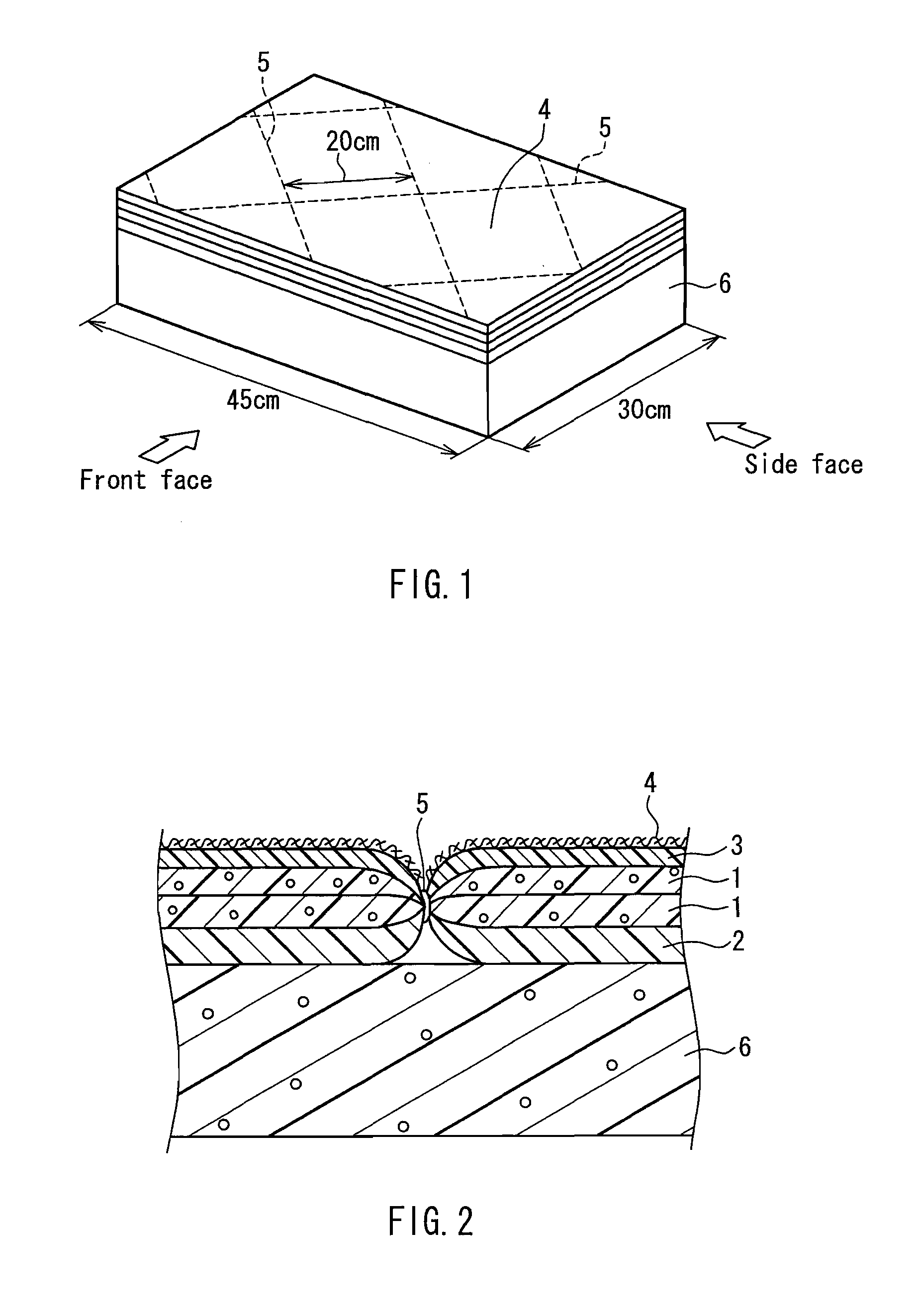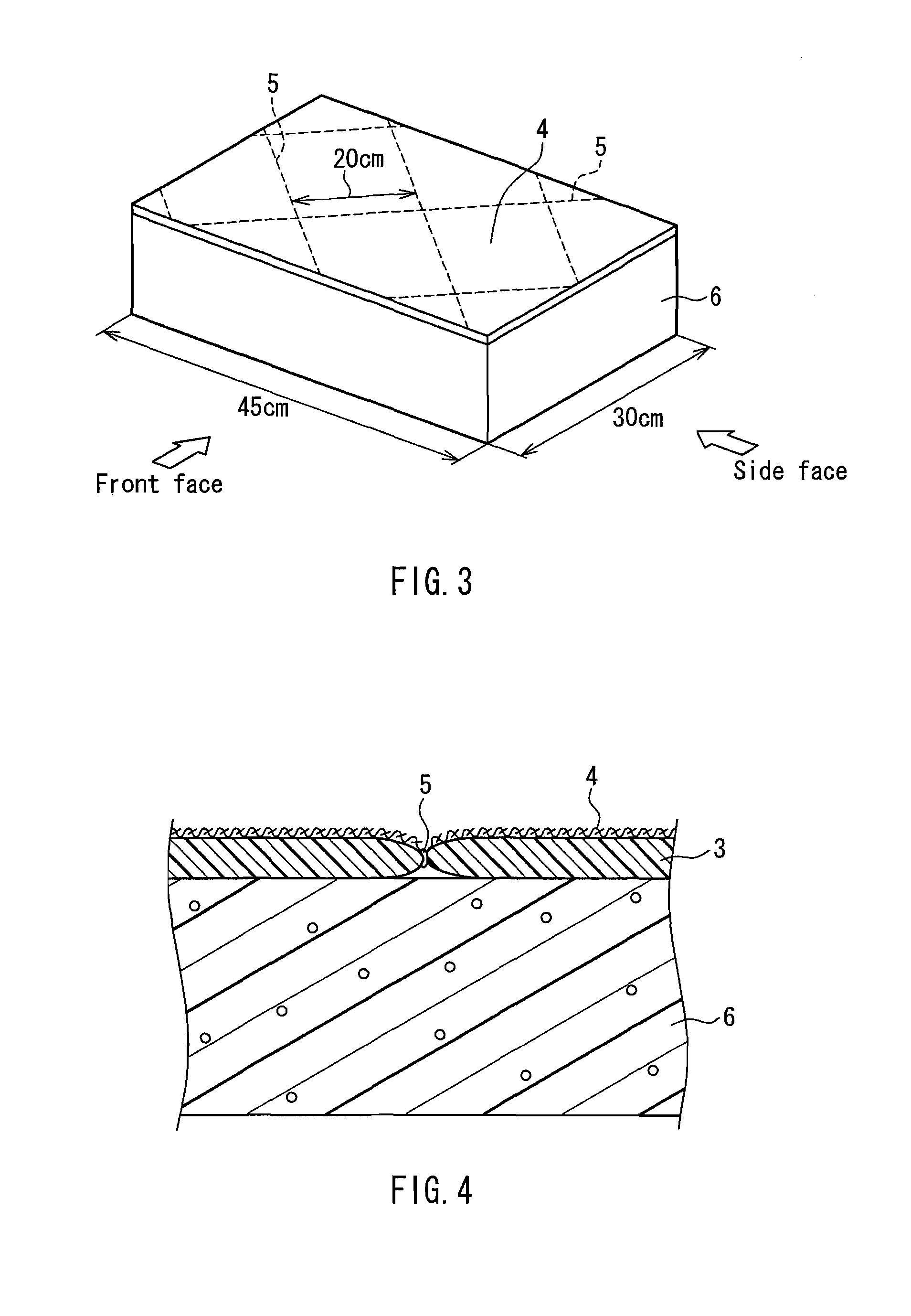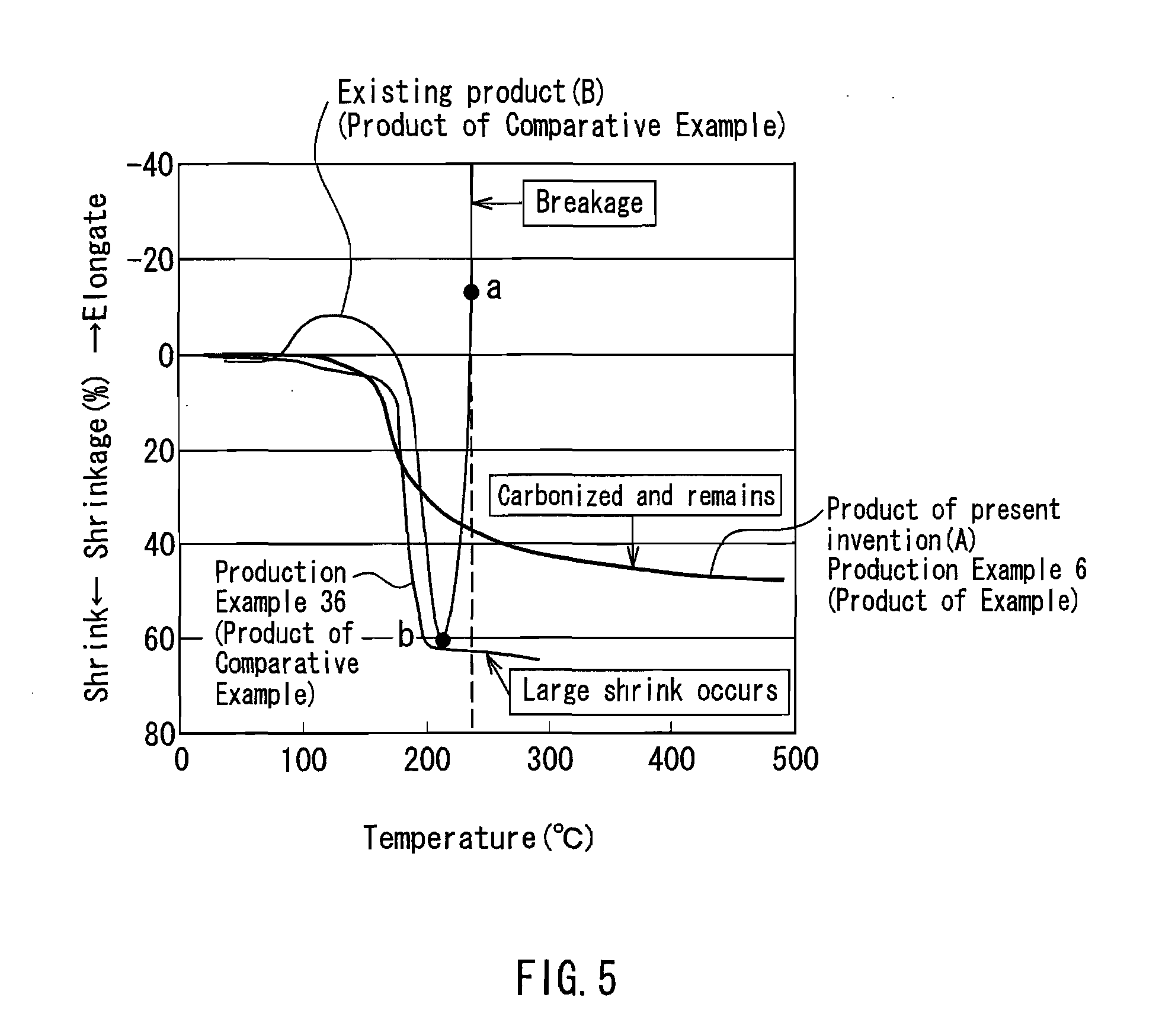Flame retardant synthetic fiber, flame retardant fiber composite, production method therefor and textile product
- Summary
- Abstract
- Description
- Claims
- Application Information
AI Technical Summary
Benefits of technology
Problems solved by technology
Method used
Image
Examples
example
[0111]Hereinafter, the present invention will be described in more detail by way of examples; however, the present invention is not limited thereto. In the following examples, “%” refers to “% by mass”.
[0112](Method for Evaluating the Acceleration of a Dehalogenation Reaction)
[0113]The method for evaluating the acceleration of a dehalogenation reaction was performed using a thermogravimetry and differential thermal analysis device (“TG / DTA220” (trade name) manufactured by Seiko Instruments & Electronics Ltd.) as follows.
[0114]First, 5 mg of the polymer (1) containing 51.5 parts by mass of acrylonitrile, 47.4 parts by mass of a halogen-containing vinylidene monomer, and 1.1 parts by mass of sodium styrenesulfonate was heated under an air condition (gas flow rate: 200 ml / min., temperature rise speed: 20° C. / min.), and the temperature at which the reduction in weight started was measured. In the present invention, the temperature at which the reduction in weight starts is defined as a ...
production examples 1-9
[0120]A copolymer containing 51% acrylonitrile, 48% vinylidene chloride, and 1% p-sodium styrenesulfonate was dissolved in acetone so that a resin concentration became 30%. Zinc oxide (zinc oxide JIS 3 class) as a metal compound (2-1), antimony trioxide as a metal compound (2-2), and polyglycidyl methacrylate (weight average molecular weight: 40,000) as an epoxy-containing compound were added to the obtained resin solution in addition amounts shown in the following Table 2 based on 100 parts by mass of the resin of the obtained resin solution to obtain a spinning dope solution. The spinning dope solution was extruded to a 30% acetone aqueous solution through a nozzle with 1000 holes, each having a diameter of 0.10 mm, washed with water while being subjected to primary stretching, dried at 120° C., further subjected to relaxation treatment in an unstretched state at 123° C. for 15 minutes in wet-heat pressure steam (saturated water vapor), and further cut...
production examples 10 , 11
Production Examples 10, 11 of a Halogen-Containing Fiber
[0121]A copolymer containing 43% acrylonitrile, 56% vinylidene chloride, and 1% p-sodium styrenesulfonate was dissolved in acetone so that a resin concentration became 30%. Zinc oxide (zinc oxide JIS 3 class) as a metal compound (2-1), antimony trioxide as a metal compound (2-2), and polyglycidyl methacrylate (weight average molecular weight: 40,000) as an epoxy-containing compound were added to the obtained resin solution in addition amounts shown in the following Table 2 based on 100 parts by mass of the resin of the obtained resin solution to obtain a spinning dope solution. The spinning dope solution was extruded to a 30% acetone aqueous solution through a nozzle with 1000 holes, each having a diameter of 0.10 mm, washed with water while being subjected to primary stretching, dried at 120° C., further subjected to dry-heat relaxation treatment in an unstretched state at 170° C. for 2 minutes, and further cut to obtain halog...
PUM
| Property | Measurement | Unit |
|---|---|---|
| Temperature | aaaaa | aaaaa |
| Temperature | aaaaa | aaaaa |
| Temperature | aaaaa | aaaaa |
Abstract
Description
Claims
Application Information
 Login to View More
Login to View More - R&D
- Intellectual Property
- Life Sciences
- Materials
- Tech Scout
- Unparalleled Data Quality
- Higher Quality Content
- 60% Fewer Hallucinations
Browse by: Latest US Patents, China's latest patents, Technical Efficacy Thesaurus, Application Domain, Technology Topic, Popular Technical Reports.
© 2025 PatSnap. All rights reserved.Legal|Privacy policy|Modern Slavery Act Transparency Statement|Sitemap|About US| Contact US: help@patsnap.com



